

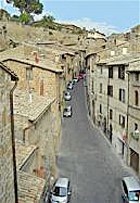
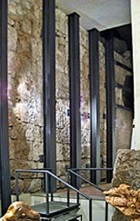
Although the cliff itself provided the main defense for the city, a parapet of tufa blocks was erected along its edge, probably in the 13th century. These defenses and the gates themselves were reinforced in the aftermath of the sack of Rome in 1527, when the papacy had a renewed interest in Orvieto as a refuge.
Porta Maggiore (13th century)
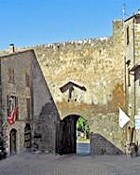
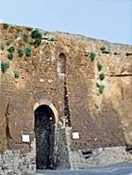
Via della Cava leads to Porta Maggiore, which was the main entrance to Orvieto from the time of its construction until the 19th century. At this point, Via Cassia Nuova was built outside it to take traffic to the new entrance to the east.
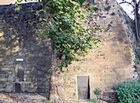
Statue of Pope Boniface VIII (ca. 1300)
The Commune commissioned a statue of Pope Boniface VIII in 1297 for a niche on the outer wall of Porta Maggiore (see below).
Porta Postierla (13th century)
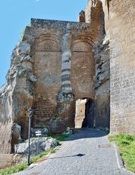
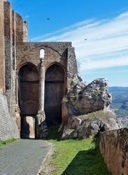
Outer wall Inner wall
This double-arched gate was once the most important entrance to the city after Porta Maggiore (below). It was originally called Porta Soliano, because it is to the east (where the sun rises). The gate was later bricked up and incorporated between the inner and outer curtain walls of Rocca del Albornoz. The level of the approach was lowered and a smaller pedestrian entrance (postierla) was opened in it.
Statue of Pope Boniface VIII (ca. 1300)
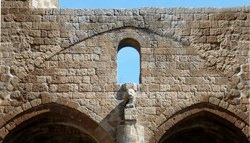
In 1297, the Commune commissioned a statue of Pope Boniface VIII (see below) for this niche on the inner wall of Porta Postierla.
Porta Santa Maria (13th century ?)
A road led from Via Soliana to a gate named for the nearby Duomo as Porta Santa Maria, from which a steep narrow path was cut into the rock. This gate closed and then reopened in the 14th century. It was not heavily used by the 16th century, and the Commune allowed the nuns of the Monastero di San Bernardino to close it, this time definitively, in 1562. [An access point to the Anello della Rupe (ring around the cliff) ...]
Porta Vivaria (13th century ?)
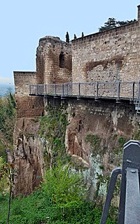
Porta Romana (1822)
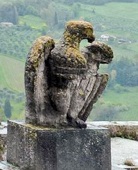
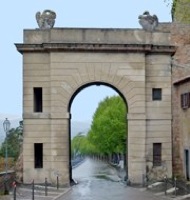
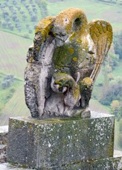
This was the site of Porta Pertusa (12th century). The inscription on the architrave of the present gate bears the name of Pope Pius VII and the date 1822. The gate, which is decorated with statues of an eagle and a goose, two of the four symbols of Orvieto, was a precursor to the construction of Via Cassia Nuova.
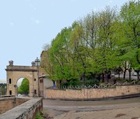
Statues of Pope Boniface VIII (ca. 1300)
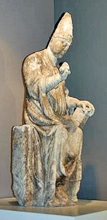
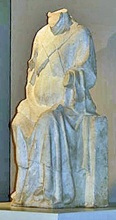
Figure from Porta Maggiore Figure from Porta Postierla
When the Commune wanted to honour Pope Boniface VIII in 1297, it commissioned these marble statues (now in the left aisle) for the niches in two of the city gates:
-
✴the one from Porta Maggiore is attributed to Ramo di Paganello; and
-
✴the other from Porta Postierla is attributed to his presumed associate, Rubeus.
These figures, which were removed in 1860, are both badly damaged. The former, however, still retains its head and arms: the right arm is raised in blessing and the left hand holds a book that has been identified as the Liber Sextus delle Decretali (1298). The form of headgear is that adopted by Boniface VIII after he had inaugurated the first Jubilee Year in 1300. The figures are now in San Francesco.
Return to Monuments of Orvieto.
Return to: Walk I: Porta Santa Maria;
Walk II: Porta Romana;
Walk III: Porta Vivaria; Porta Postierla;
Walk IV: Porta Maggiore; Porta Postierla.

